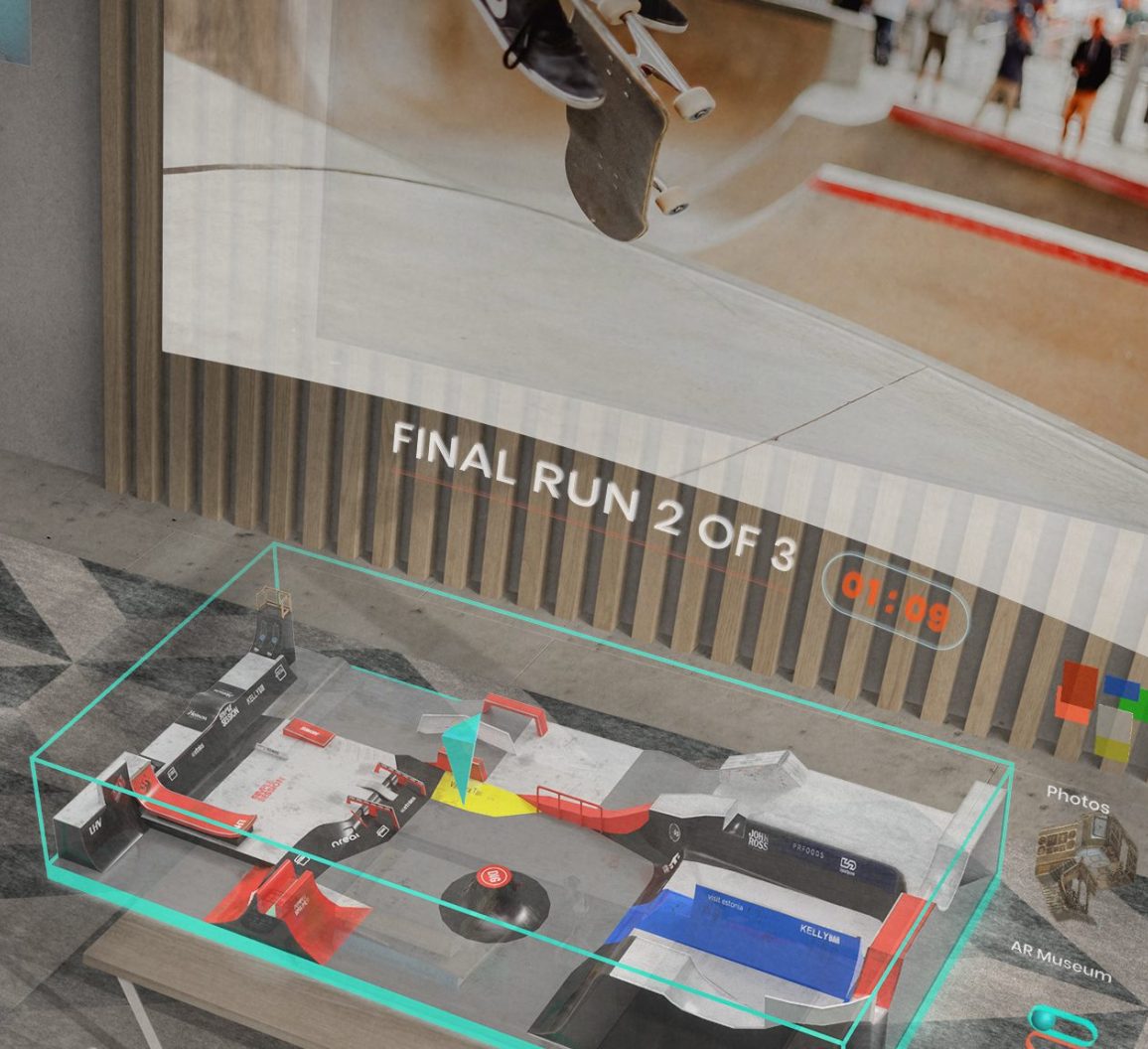CES 2020: Nreal Mixed Reality Glasses Get Eye Tracking and Nebula 3D AR UI
Nreal’s data glasses Nreal Light are not yet on the market but the manufacturer has already announced the first hardware upgrade to the Augmented Reality glasses.
![]()
Nreal Light augmented reality glasses are the closest we have come to having augmented reality glasses that look just like a normal pair of sunglasses. They are a huge departure from the bulky and clunky AR hardware that the industry has become accustomed to.
The Light glasses are set to ship consumers early this year so during CES, the company was keen on addressing some of the key user concerns such as how the glass will load and control apps in augmented reality. At the CES 2020, Nreal revealed a new 3D home screen named Nebula that will provide users with access to Android apps as well as interactive 3D content. It will also provide eye tracking and controller support, enabling users wearing the glasses to interact with mixed reality experiences.
Be blown away by the next gen MR games that we’re showing off at #CES on @blckshrk_global’s Black Shark 2 Pro, tethered to #Nreal Light.#Nowitsreal pic.twitter.com/l5U04Kvl1D
— XREAL 👓 (@XREAL_Global) January 8, 2020
Nebula will transform the current environment into a user interface. It will make it possible for users to place persistent app screens within a physical space and interact with these as they wish. A hands-on testing of the user interface (UI) showed anti-aliased text as well as icons which looked clearer and brighter than what you’d expect from Nreal Light’s dual 1080p displays. A tethered Android smartphone will act as a 3 degrees-of-freedom (3DoF) controller and will allow the users to laser-point icons and re-position app windows to users’ preference in 3D space.
Nreal has stated that the UI will create a digital reconstruction of the user’s real-world surroundings. It will allow for virtual objects to be occluded within the 3D space thereby producing a very realistic mixed reality blending. The demo did not show this, however. A single user will be able to keep this space private. Multiple users will also be able to share the play-space and the app work for collaboration.
Importantly, the Nebula UI serves as the bridge between the operating system of the host device and the glasses. It allows for the traditional Android apps -including Facebook, YouTube and others- to be accessed when the user is wearing the Nreal Light glasses. These apps are subsequently displayed in a digital window in the augmented reality glasses. During the CES 2020, Nreal also displayed AR-bolstered apps for gaming, shopping, education as well as smart home software.
With eye tracking, the augmented reality glasses can now track eye movements for interactions with menus and general augmented reality applications. Additionally, or alternatively, there are multiple options that can be used in controlling Nebula and other apps. The glasses’ wearers can use any tethered (wired) smartphone as a 3DoF controller. The smartphone can be used as a 3DoF controller or pointer thanks to the standard integrated motion sensors.
Nreal has also partnered with the manufacturer Black Shark to provide an augmented reality control kit for AR games. The Nreal platform will also provide support for Finch’s controllers. Nreal boss Chi Xu stated that he’s not sure which of these input methods will eventually become the new standard interface. It is likely to be a mixture.
Nreal has also partnered with 7invensun to incorporate eye tracking into the Nreal Light. As a result, the headset will soon be going past tracking control inputs and into head motions via the addition real-time gaze controls.
Nebula is Nreal’s Spatial OS
During the CES 2020 last week, Nreal presented its 3D operating system Nebula for the first time. This is the user interface with which the glasses wearers will use to spatially arrange controls in their surroundings. When an app has been assigned onto a fixed location, then it should be anchored onto it permanently. Multiple users will thus be able to share their app space with one another or use it alone in a private mode.

Nreal continues to talk about the AR shopping app Portal that it is developing in collaboration with other partners. Portal will transform your living room into a virtual shop where you can digitally explore the new clothing and experience the fashion.
Nreal feels confident that it is on the right path and has opted for the right strategy with its smartphone-bound AR. Nreal boss Xu believes that the transition from smartphone-bound AR into AR glasses-based AR will occur in the next five years.
Nreal began the sale of the developer version of the “Light” AR glasses in December this year. The glasses cost about $1,200. The cost is inclusive of a controller and pocket computer. The Nreal consumer version comes without a pocket computer and is expected to be released in the first half of 2020 and will cost under $500. Users can connect these glasses to a smartphone or to a PC via a USB-C connection.
Nreal will also offer optional magnetic corrective lenses to accommodate nearsighted users. There will also be able magnetically attachable nose pads which come in the box. No pricing information has been provided so far for the lenses.
https://virtualrealitytimes.com/2020/01/12/ces-2020-nreal-mixed-reality-glasses-get-eye-tracking-and-nebula-3d-ar-ui/https://virtualrealitytimes.com/wp-content/uploads/2020/01/Nreal-Eye-Tracking-600x338.jpeghttps://virtualrealitytimes.com/wp-content/uploads/2020/01/Nreal-Eye-Tracking-150x90.jpegAugmented RealityTechnologyNreal’s data glasses Nreal Light are not yet on the market but the manufacturer has already announced the first hardware upgrade to the Augmented Reality glasses. Nreal Light augmented reality glasses are the closest we have come to having augmented reality glasses that look just like a normal pair of...Sam OchanjiSam Ochanji[email protected]EditorVirtual Reality Times - Metaverse & VR
